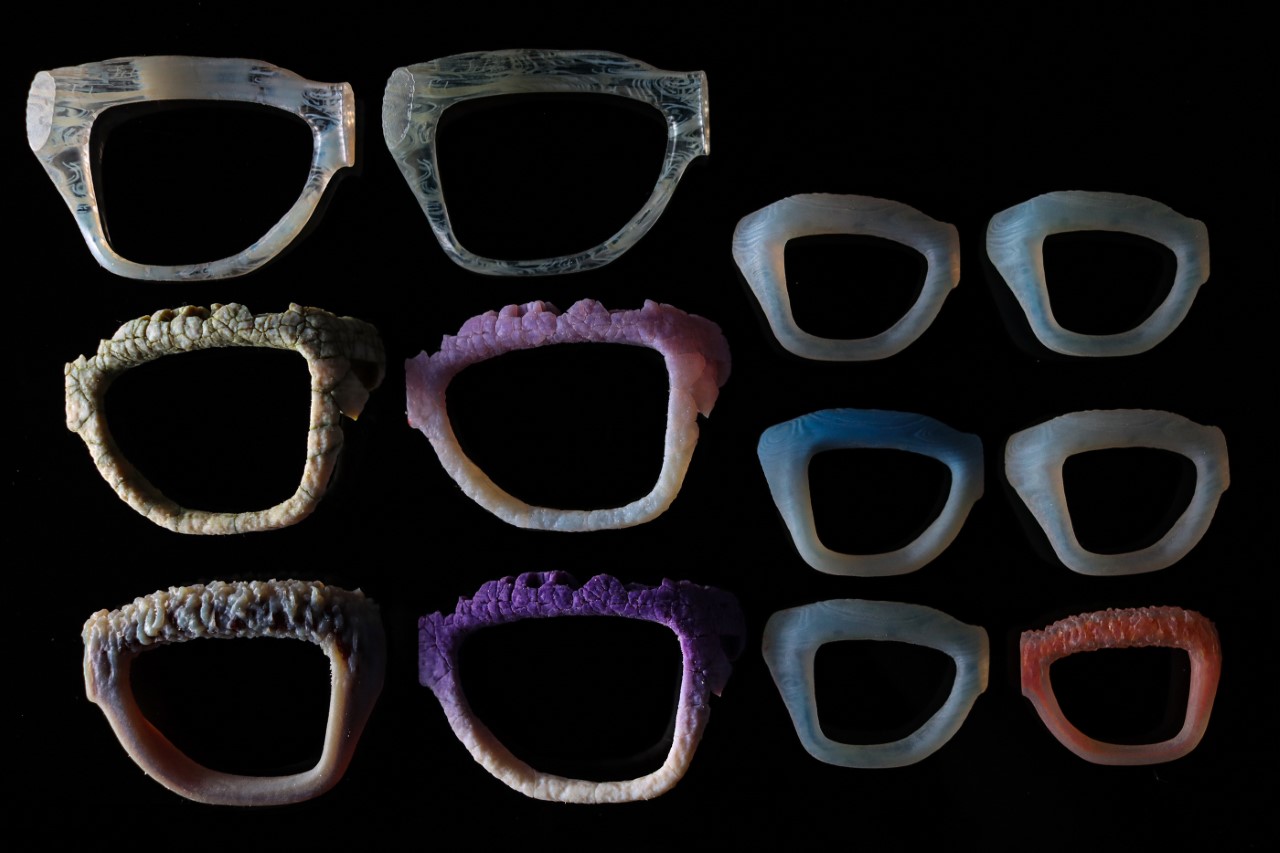Constraints form a major part of a designer’s process. Whether it’s constraints based on materials, manufacturing capabilities, technology, or even just budget constraints, designers work well within those boundaries to create the best solutions possible… but what if there were absolutely no constraints? If everything were left up to chance, what would you do? That’s what designer and educator John Mauriello shows with this video, where the sky is practically the limit. Relying on $200,000 printers from Stratasys, and technology that’s so cutting edge that consumers can barely afford it, Mauriello created the wildest set of sunglasses we’ve ever seen. Ergonomics, aesthetics, and design guidelines be damned, Mauriello’s sunglasses are absolute statement pieces, showcasing the themes of earth, wind, fire, and water. Moreover, they explore a set of circumstances that most designers don’t get to explore – a highly elusive ‘what-if’ scenario where money, material, and manufacturing are all open-ended.
Designer: John Mauriello
Prototyper Stratasys

No, these are not mass-market glasses. In fact, they’re experiments that aren’t for sale… but instead, form a core part of Mauriello’s design exploration and education approach. You can follow John’s YouTube page “Design Theory” to learn more… and if you want to design and print your own frames without shelling out $20,000 for a fancy top-of-the-line printer, scroll to the bottom of the article to learn more about Xometry – a website that 3D prints your designs and delivers them to your doorstep.
A lot of a person’s emotions get expressed through their eyes, and sunglasses hide that. It’s why people wearing sunglasses look mysterious to the extent of appearing ‘cool’. That became the starting point for Mauriello’s ideation. “That’s actually why I came up with the four elements idea,” he said. “I liked the idea of a natural disaster happening around your face, but you still look cool and calm and collected to the outside world. Plus I really liked Captain Planet as a kid…”
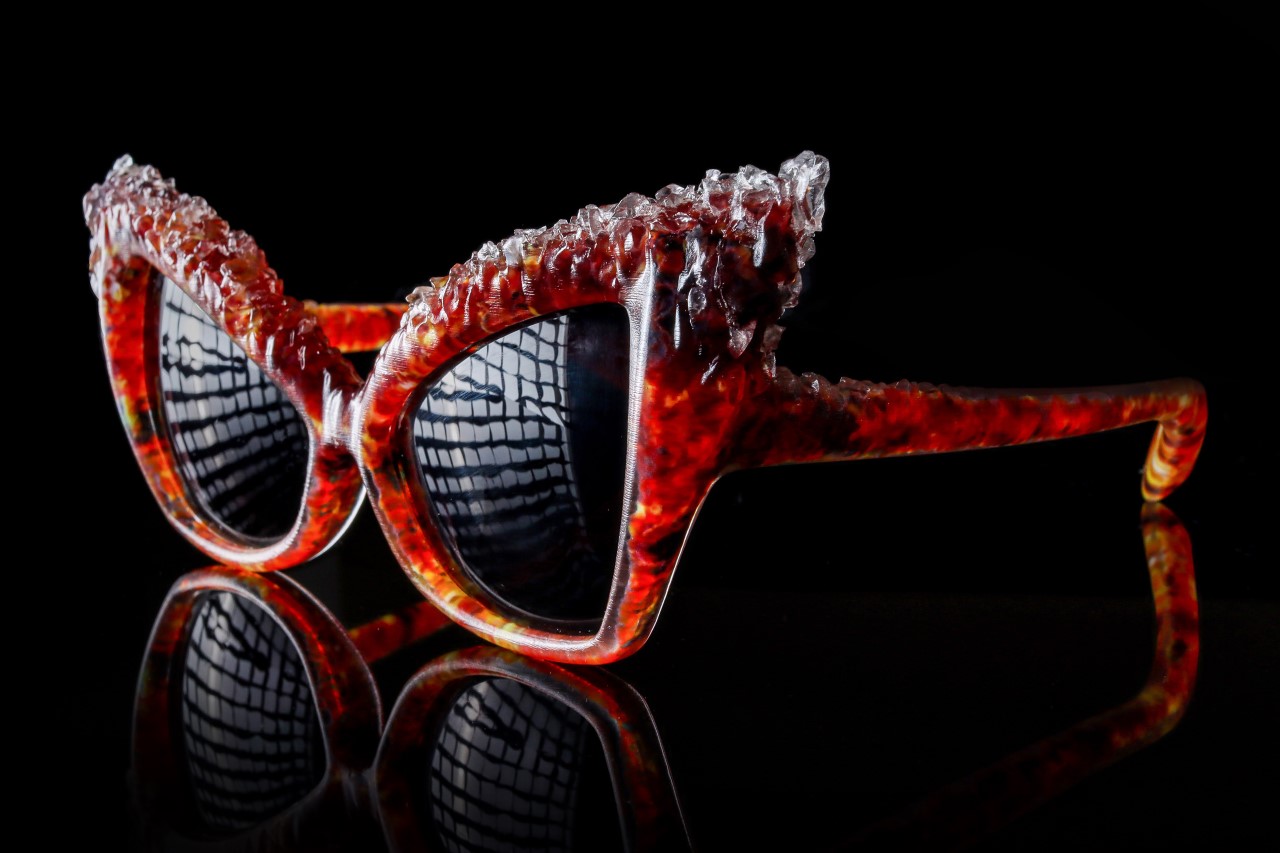
To design these outlandish sunglasses, Mauriello resorted to an unconventional design direction that he just wouldn’t get to explore with a paying client. The process involved sketching in VR with Gravity Sketch before transferring the templates to Houdini for effects such as fire, wind and water. Mauriello tried out a variety of flames and embers to create the Fire effect before finally settling on red flames enclosed within clear flames. The clear glasses look like they are melting because of a fire.
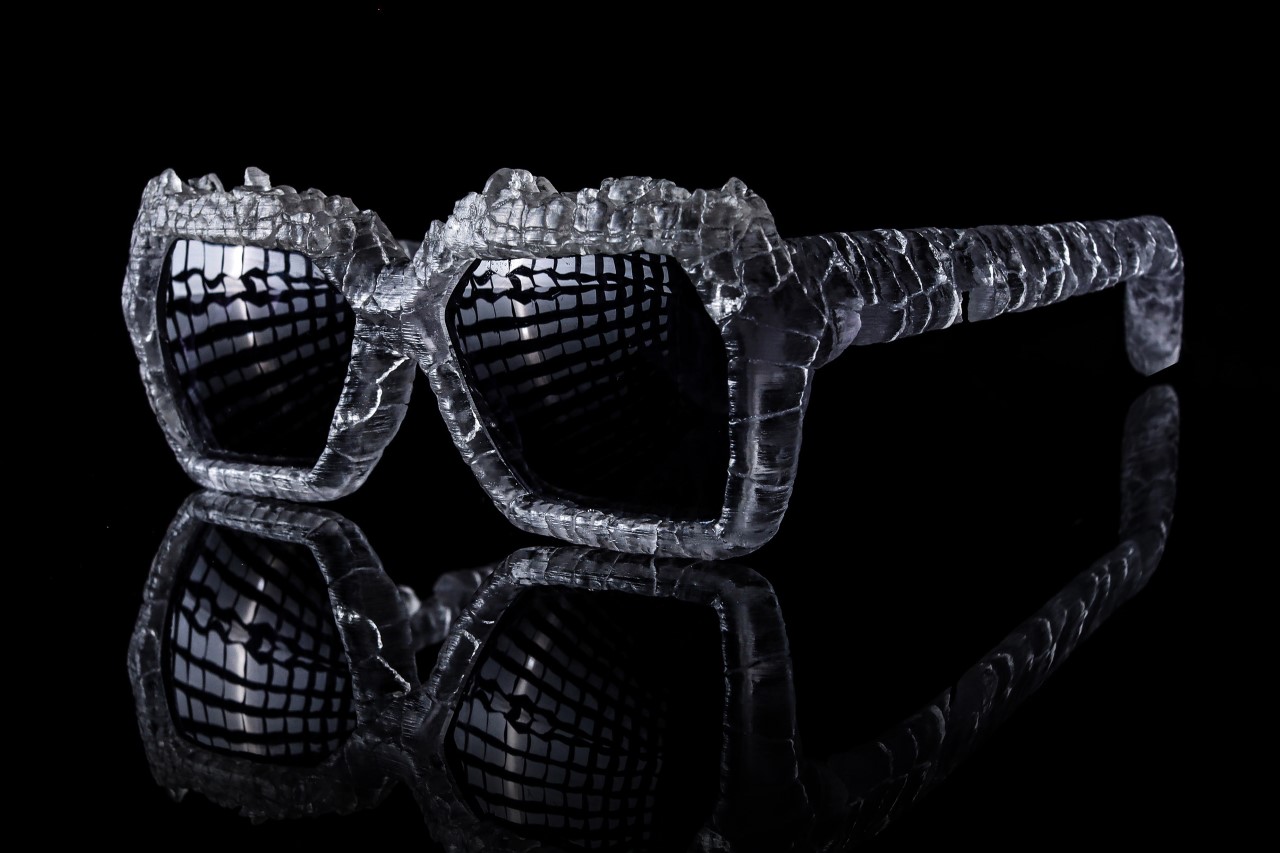
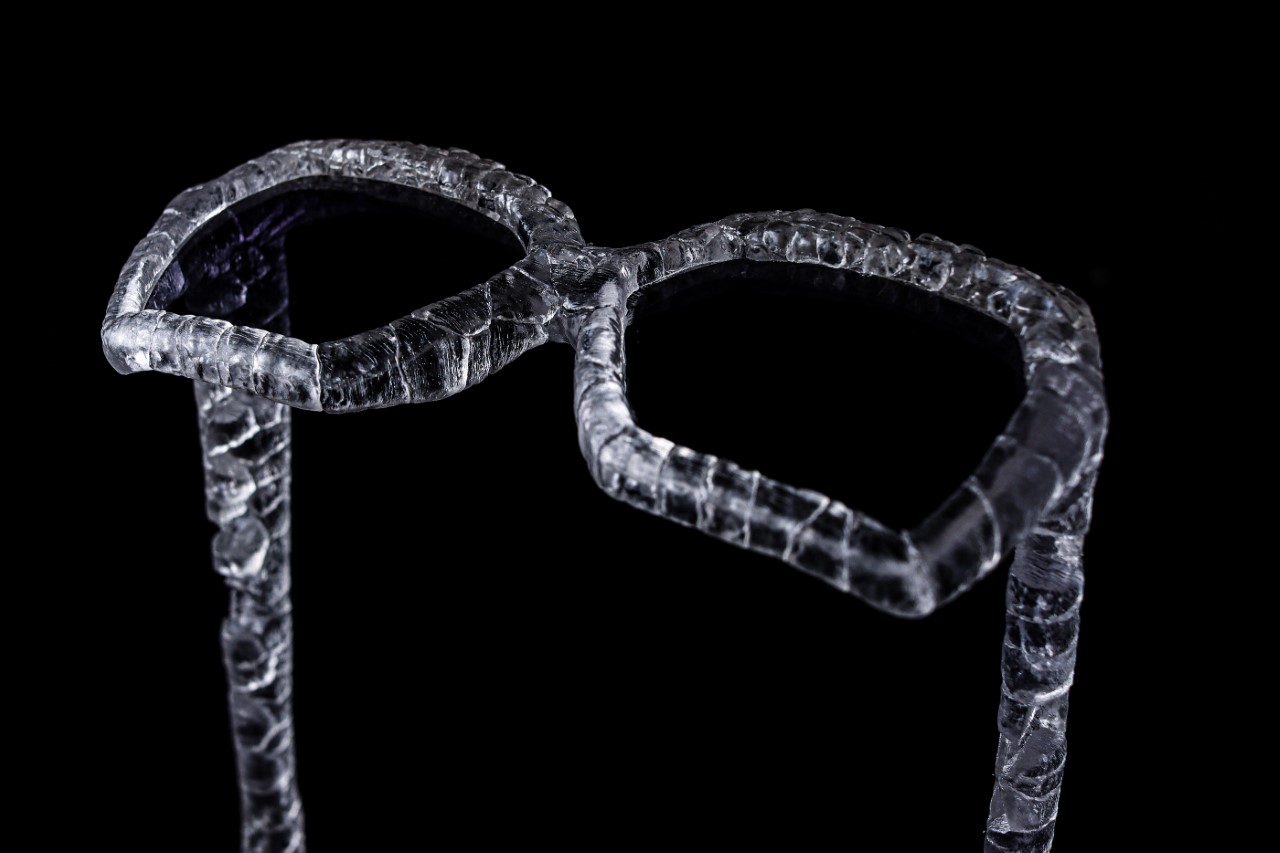
Earth sunglasses have a surface with cracks that resembles chiseled rocks. Unlike the Fire sunglasses that have an almost sinister aesthetic (the kind you’d see on a supervillain), the Earth glasses have a stable, grounded, rectangular form factor that’s made a tad bit more interesting by the cracks in its surface.
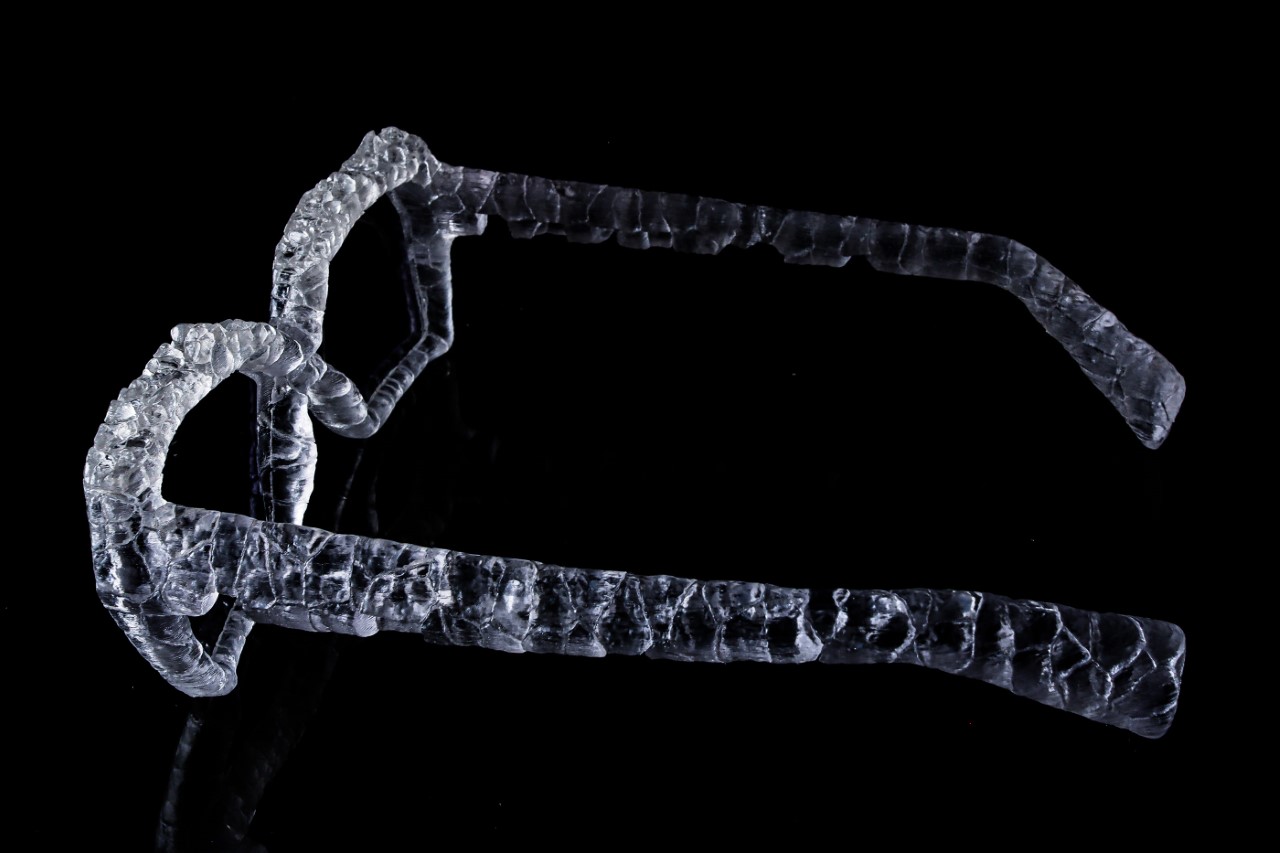
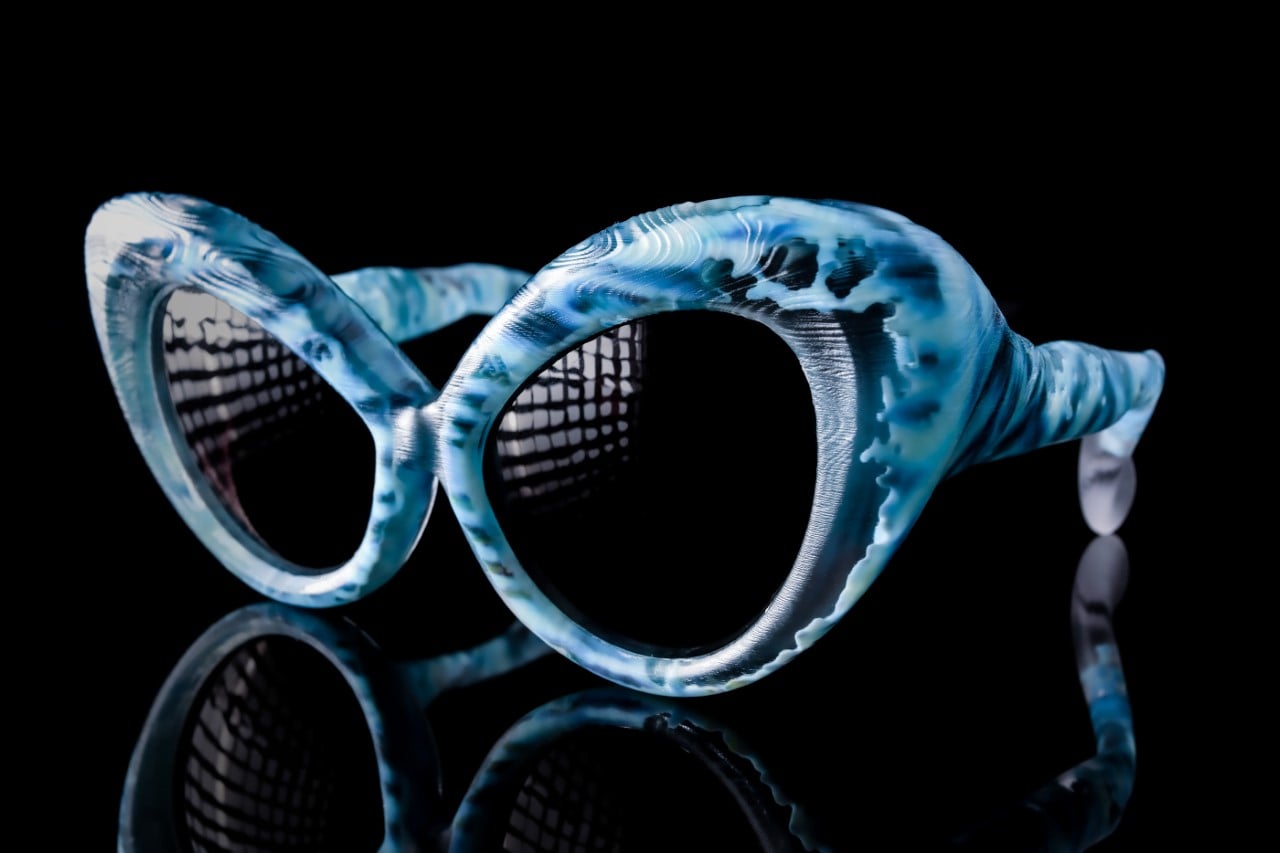
Water sunglasses feature a bubble aesthetic, with rounded forms and liberal rounded edges. Instead of only relying on simulations they also incorporate AI-generated art. The splashes inside the clear frames were made in Houdini itself, but the colors and textures on the splashes were generated using OpenAI’s DALL-E 2. Mauriello wanted to make his own pictures, rather than use stock ones, so that the glasses would have a more unique look.
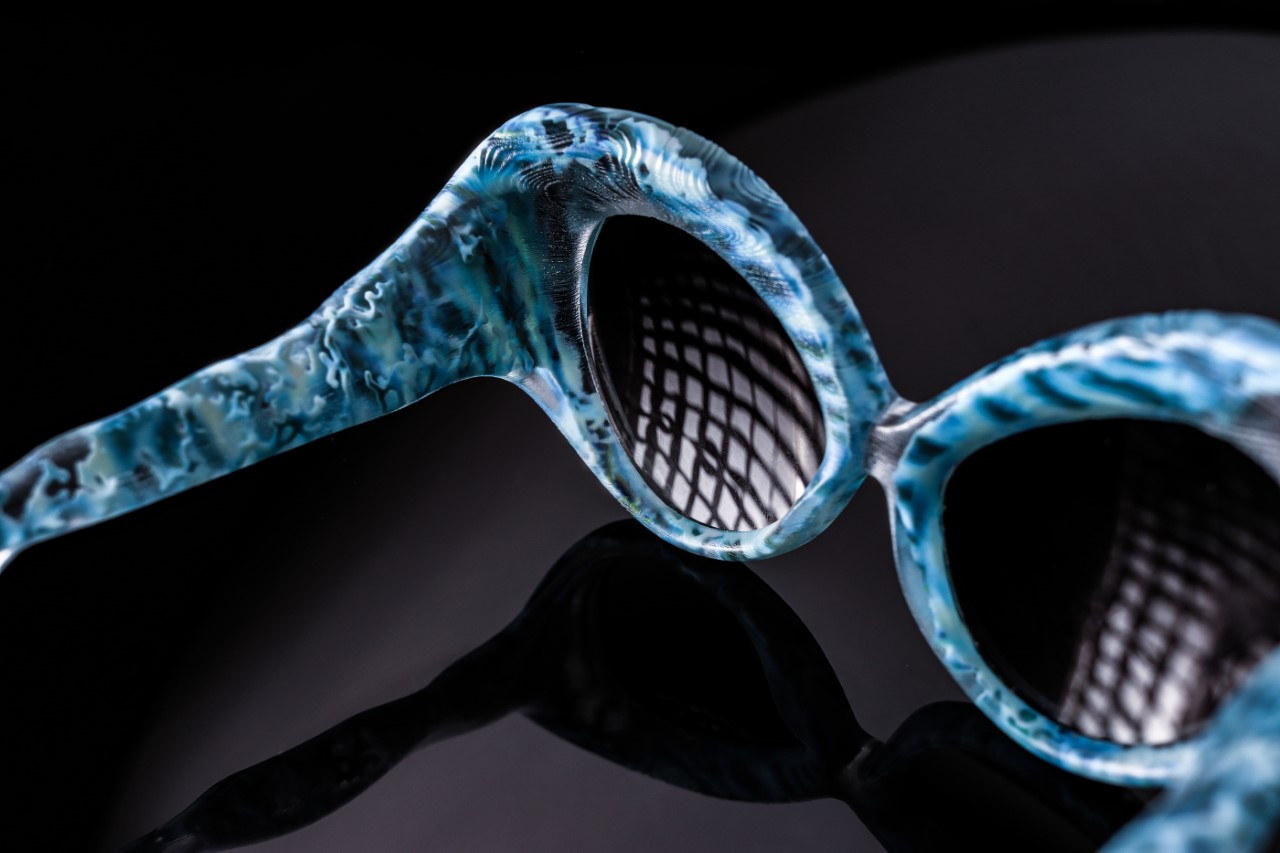

The Wind shades also feature AI-generated textures on the colored frames. These colored elements are designed to look as if they were wisps or smoke. They’re trapped inside a frame with an aerodynamic design, and ribs that run along the front. It looks like something from a wind tunnel test. You can see the wispy shapes inside that look like glass marbles. It seems impossible to create this object without 3D printers.
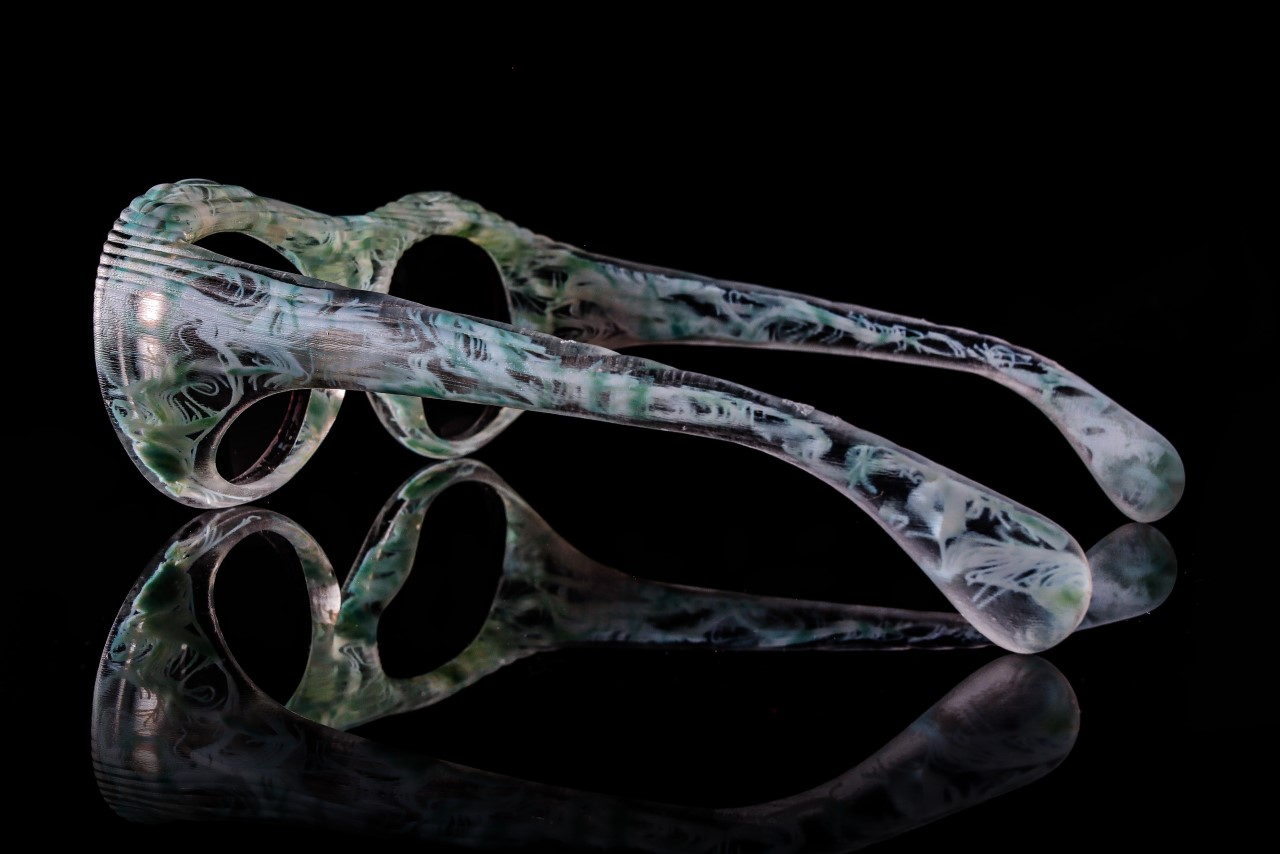
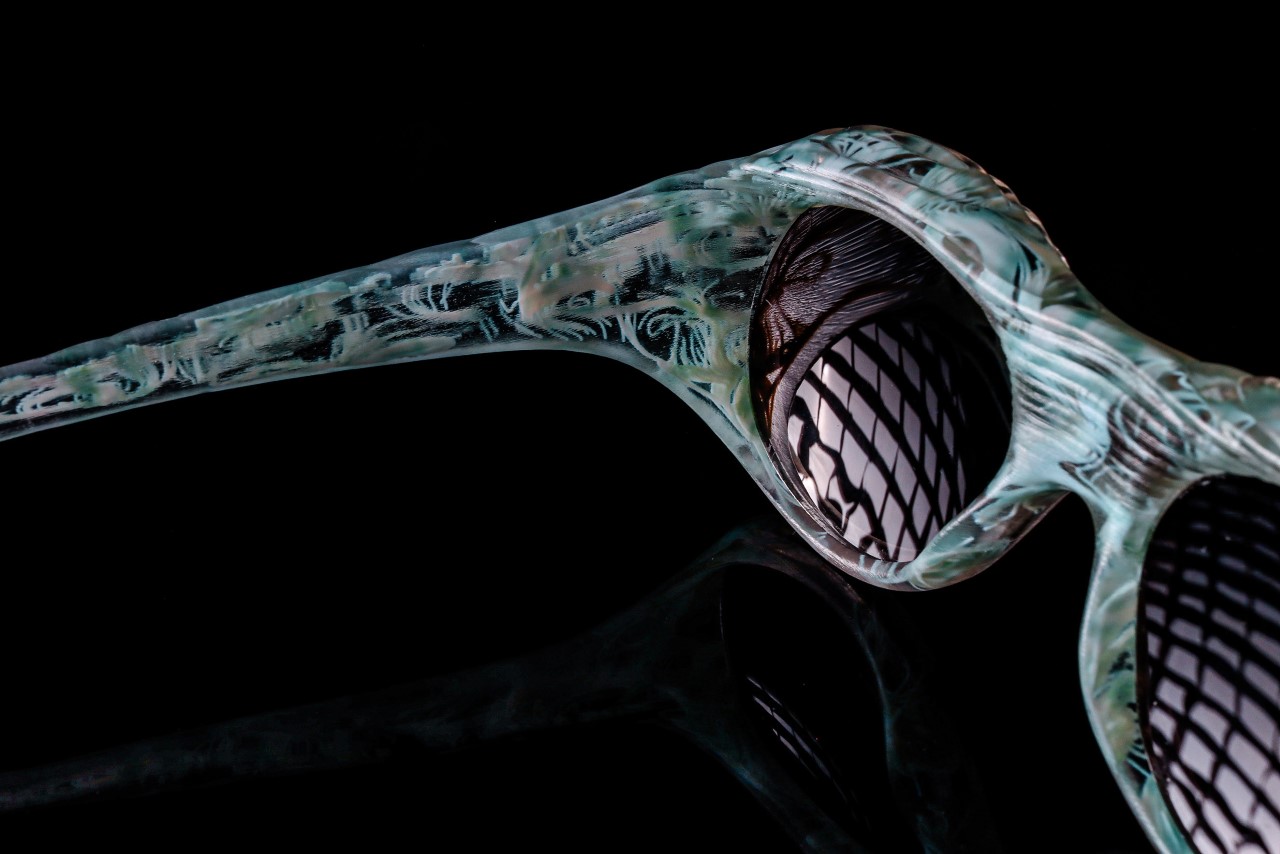
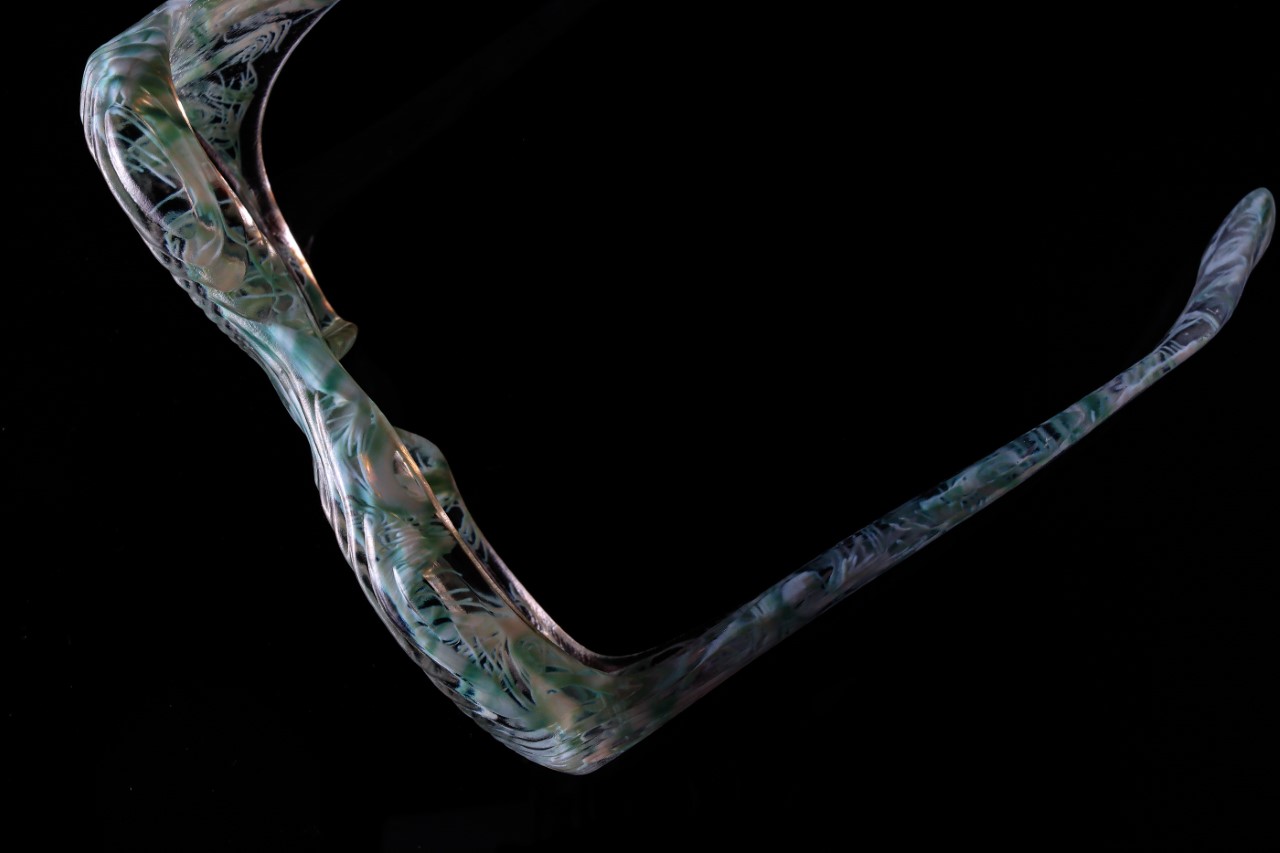
Stratasys approached Mauriello and let him build designs using their J55 printers. The J55 is the company’s high-end full-color multi-material printer that prints in ‘voxels’ instead of sliced layers. This allows the printers to meticulously build designs with multiple materials, finishes, textures, and colors all in one stretch – a feature that was integral to Mauriello’s project.
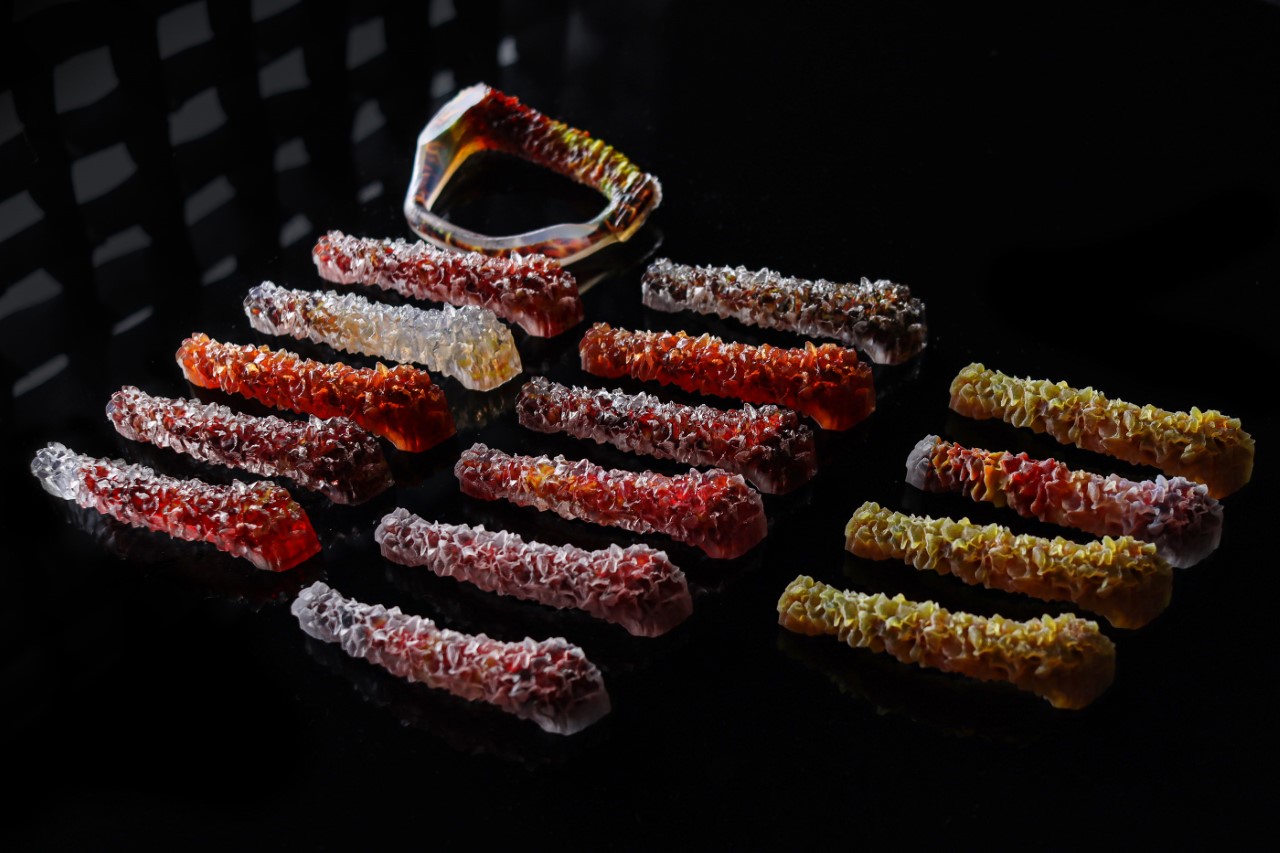
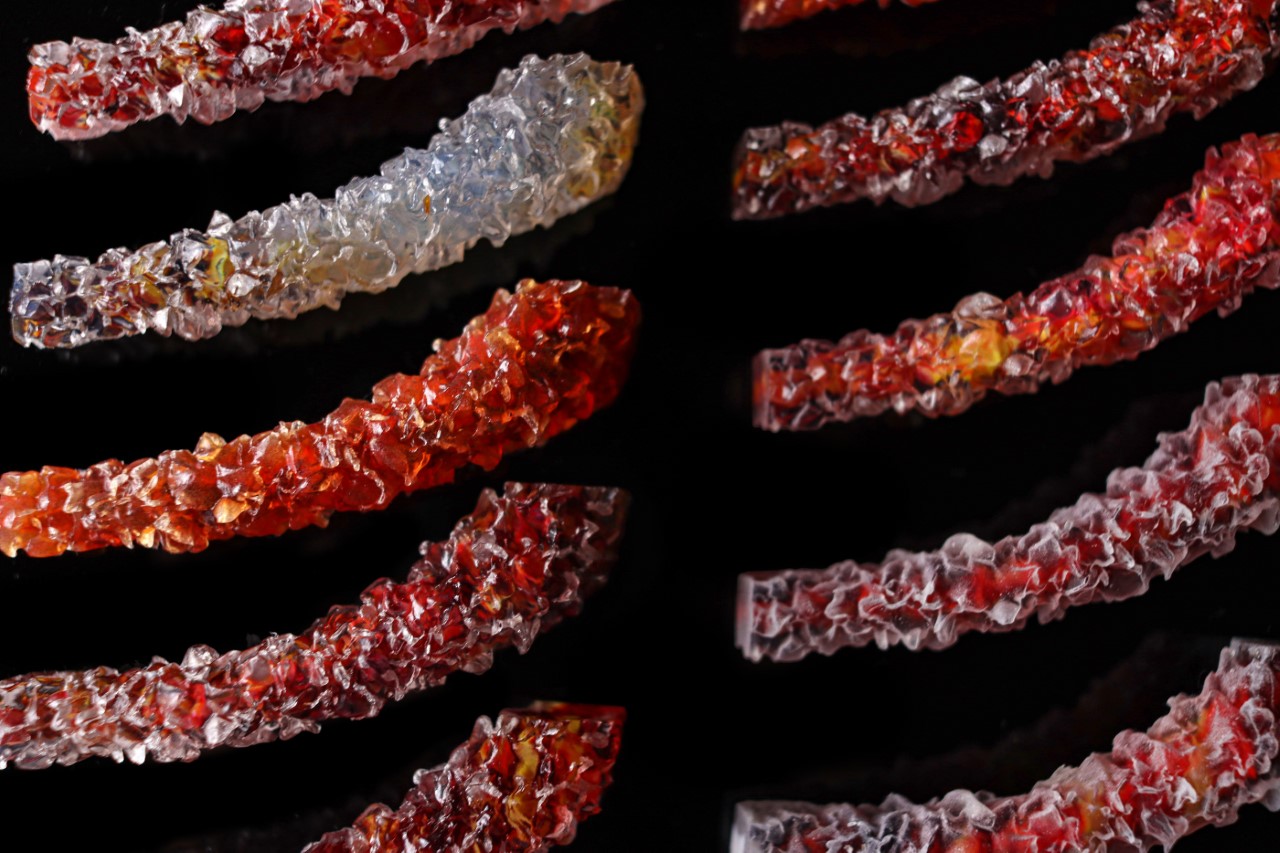
Mauriello could also test colors, finishes, or other details by building multiple samples with the J55. Mauriello created multiples of the same element and tested colors, transparencies, and finishes to fine-tune his designs. “You can experiment with a huge range of ideas and one of them is likely to be what you want,” he explained.
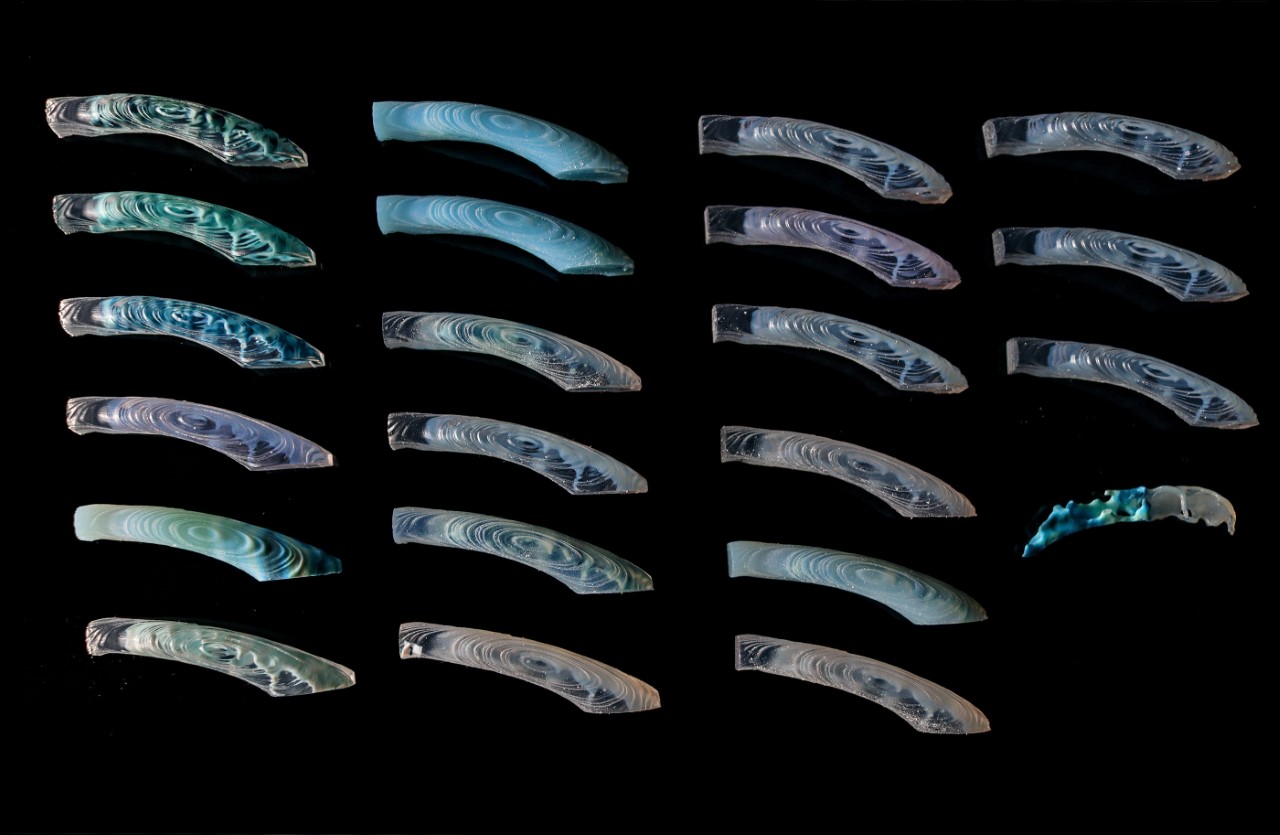
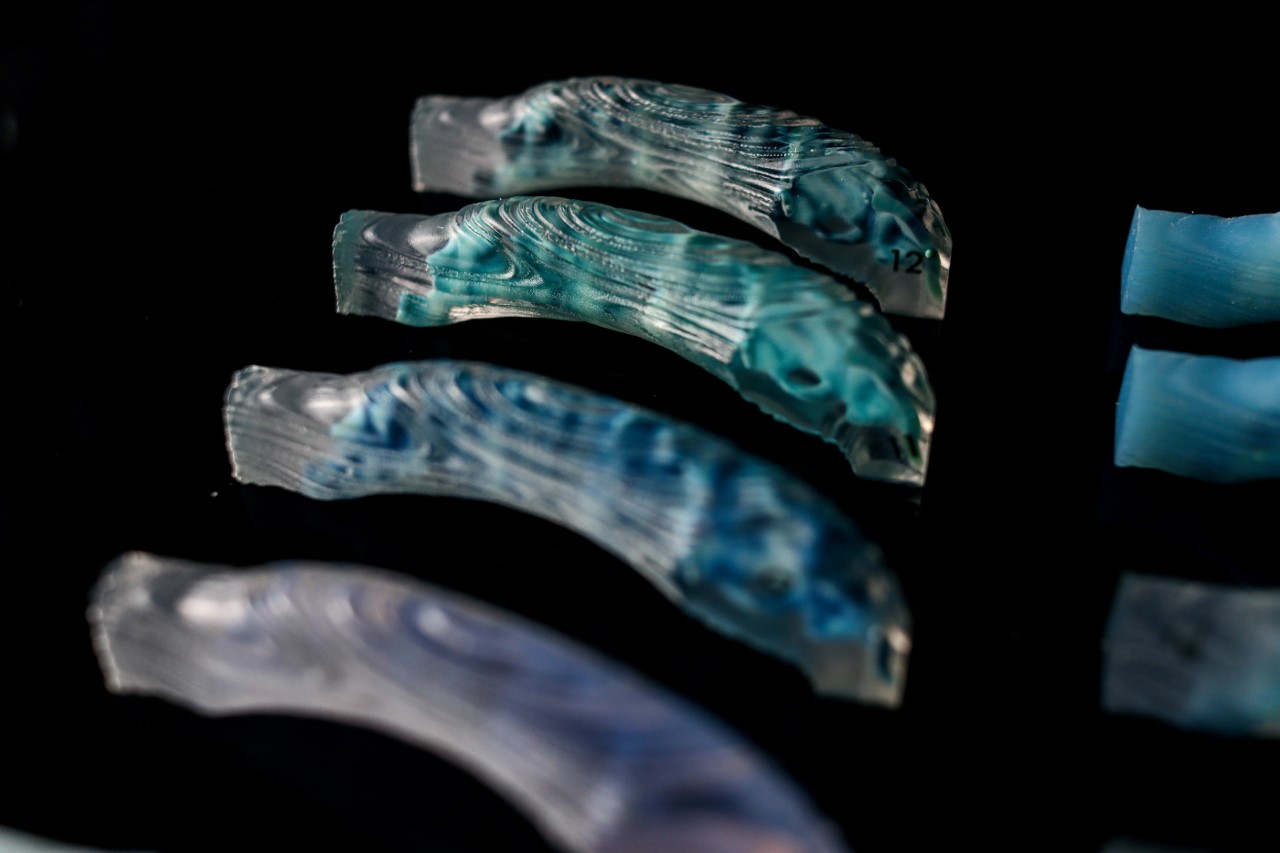
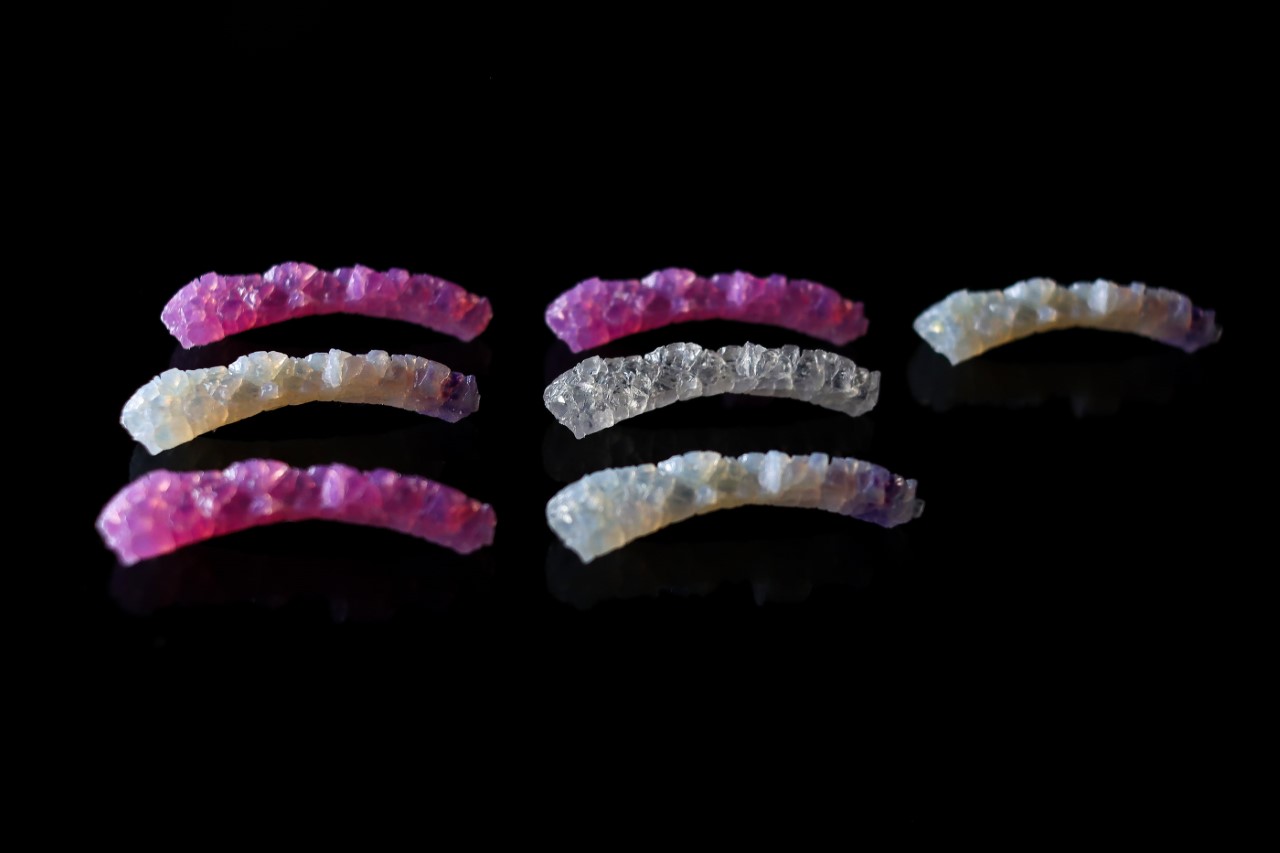
Mauriello fitted lenses onto the sunglass samples once they had been completed. The glasses don’t have hinges on them, and are unibody (so they can’t be folded), but they are absolutely wearable, and Mauriello even got feedback from a pro eyewear designer on the forms and the overall design language of each elemental sunglass.
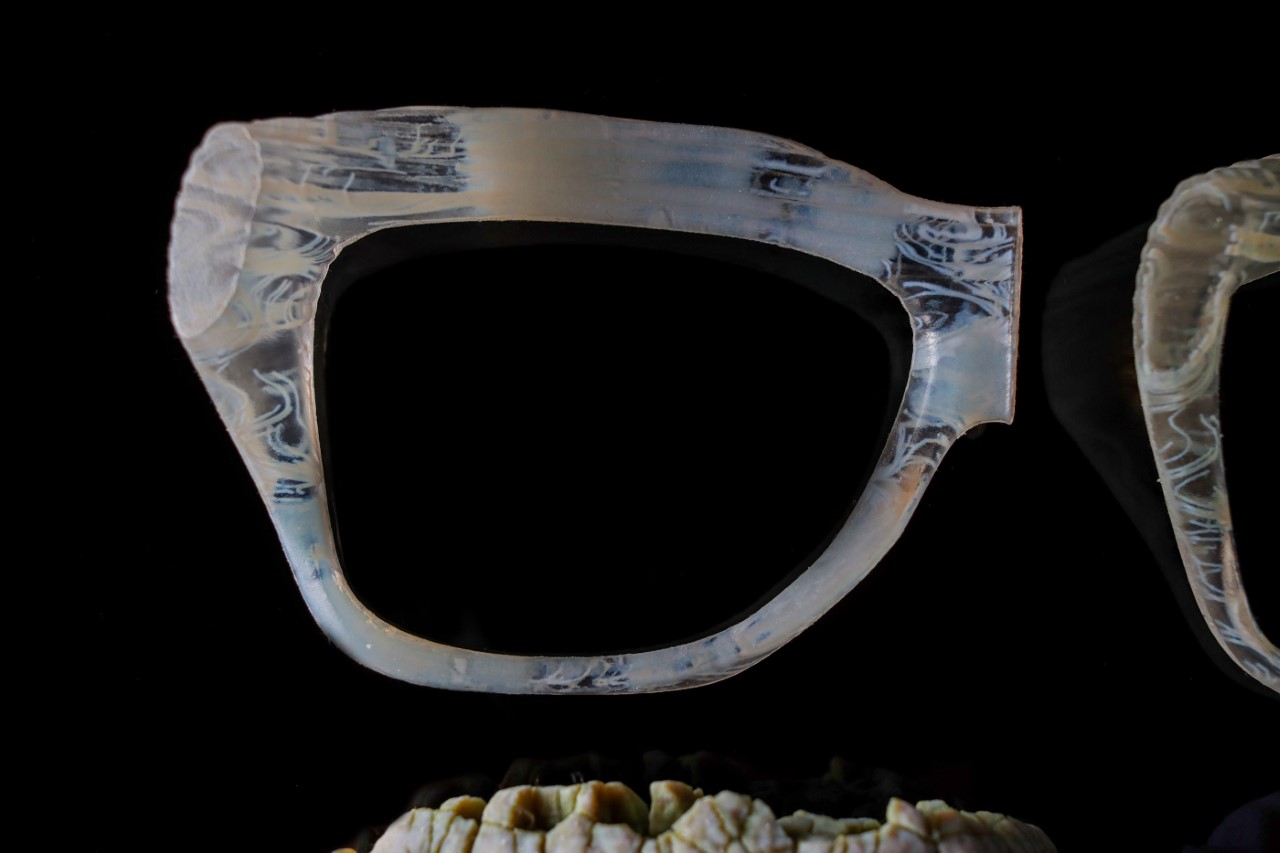
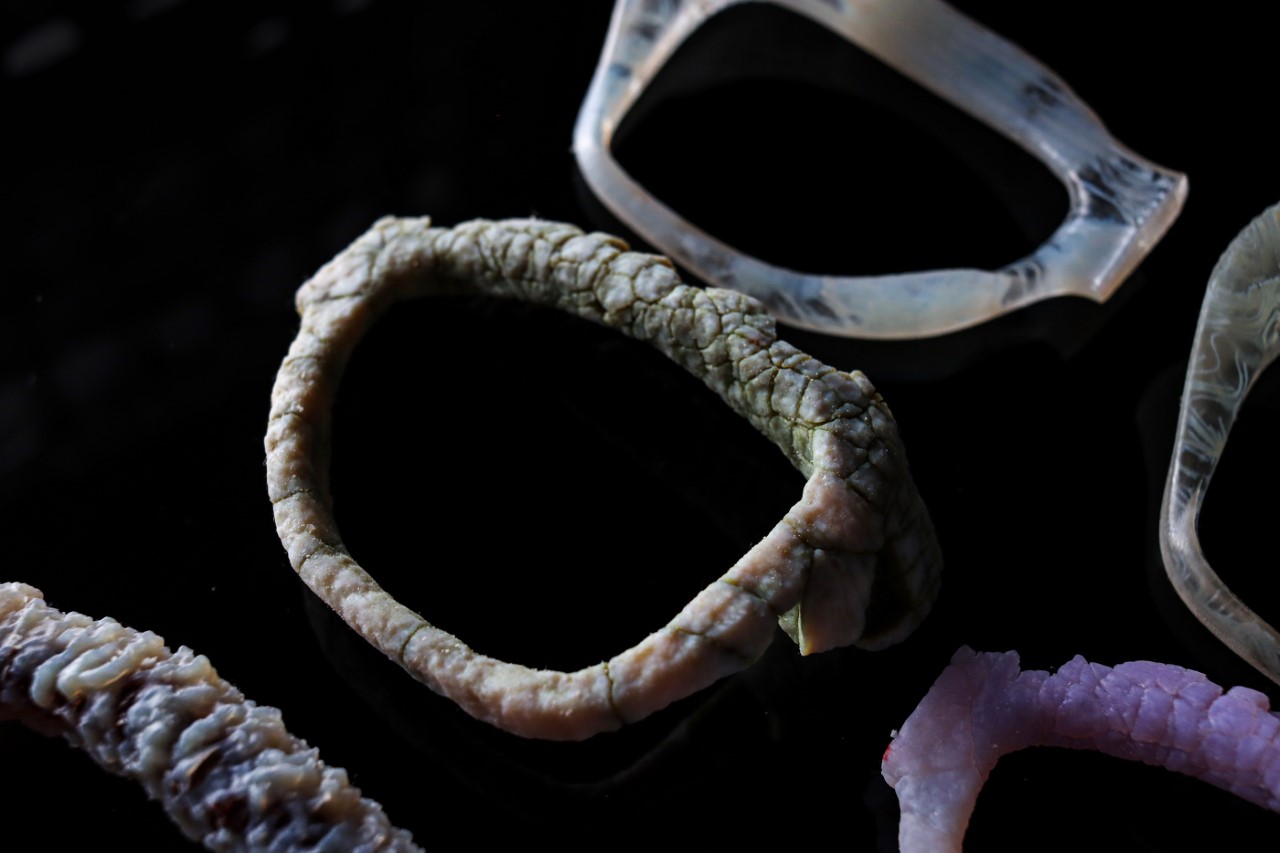
Mauriello worked with Stratasys on the project, which was a collaboration between them. They loaned him their multi-material printing machines to show off their capabilities. If you want to make designs just like these, Stratasys does offer a ‘Manufacturing On-Demand’ option that lets you generate an instant quote based on your parts. Alternatively, Xometry has a worldwide network of more than 10,000 CNC manufacturers and 3D printers. They also have molders and other equipment you can use for 3D printing, CNC machining, or even molding. Xometry’s Instant Quoting Engine allows you to upload your 3D model and receive a quote within a few days. Please click here for more information!
